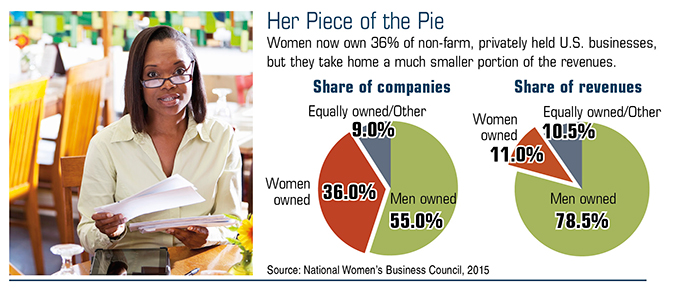The Status of Women-Owned Businesses

According to the U.S. Census Bureau’s Survey of Business Owners, the total number of U.S. businesses grew just 2% between 2007 and 2012. Meanwhile, the number of women-owned businesses grew by about 27% to 9.9 million. At last count, women-owned businesses employed almost 9 million people and added more than $1.6 trillion annually to the U.S. economy.
Even though this demonstrates a certain amount of progress, female-owned businesses are still considerably smaller and generate less revenue, on average, than male-owned businesses (1–2). One reason for the gender gap is that women-owned firms tend to be concentrated in service industries that are crowded and less profitable. Many of these are sole proprietorships with low start-up costs but limited growth potential (3).
Secondly, women might be satisfied with smaller firms because their business objectives are often different from their male counterparts. Being your own boss provides the opportunity to balance work life with family responsibilities. Women may be more likely to prioritize autonomy and flexibility over money.
Aiming for Growth
It’s exciting to discover an opportunity to expand your business’s size or scope, but you may need to invest a fair amount of time and money. Unfortunately, studies and statistics suggest that women-owned businesses with plenty of growth potential are often held back by a lack of credit access (4).
Here are tips for entrepreneurial women to build a more lucrative enterprise:
- Set higher goals. Focusing on growth planning from the early stages can make it easier to expand later. Banks often require significant collateral and several years of stable profits. Owners who track and analyze information on operations, sales, and financial performance will have thorough financial records and more convincing projections for potential lenders or investors down the road.
- Build a good team. If customer demand for your company’s goods or services is steadily increasing, or you would like to act on attractive growth opportunities, you may want to hire a person with a particular skill set to help.
- Join a network. Seeking out other women business owners and learning from their experiences may help you adopt the best practices and avoid costly mistakes.
